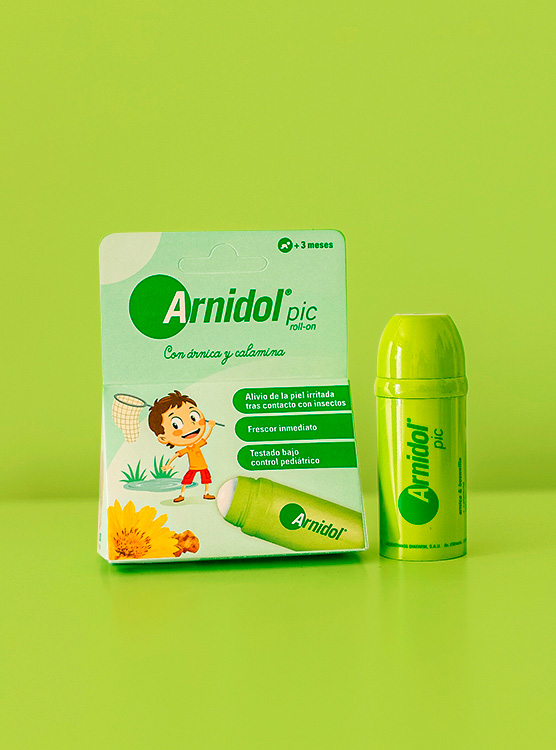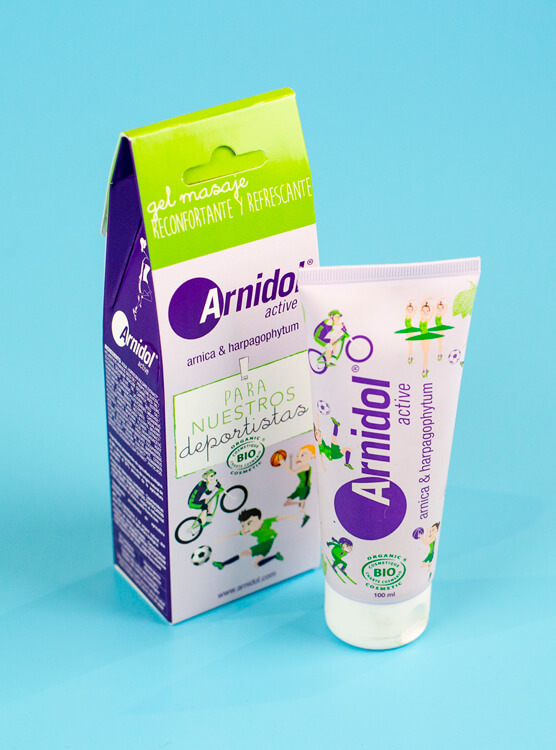- junio 20th, 2013 |
- What should you do if your child wakes up covered in spots? How can you bring her temperature down? What about tummy ache?
- Arnidol® looks at some common childhood illnesses and tells you what you can do in each case.
- Before that, however, see your paediatrician to confirm the diagnosis.
Although you try to keep them away from viruses and bacteria, at some point your children are going come home with a tummy ache or a temperature. It is inevitable that they will pick up common illnesses like gastroenteritis or chicken pox. Take your child to the doctor for a correct diagnosis and follow Arnidol®’s advice on how to relieve the symptoms.
If your child wakes up covered in a rash…
It’s not likely to be measles or German measles. These diseases have been largely eradicated in Spain, thanks to vaccination. But she might have:
Chicken pox. It is characterised by spots, mostly on the face and body, and generally a mild fever. The spots develop into itchy blisters full of clear liquid. Finally the blisters dry out and crust over. Being caused by a virus, the doctor will not prescribe antibiotics, but will let the disease run its course.
Tip… A tepid bath or compresses with orange flower water soothe itching. To stop your little one from scratching, trim her nails and put her in clothes with long sleeves made from breathable fabric.
Be aware! Don’t put talc or cream on the rash.
Roseola. Very common in children between 6 months and 2 years of age, it is a caused by a virus that causes high fever. After three or four days, the fever drops and a rash appears on face and body. It is a mild illness that does not require antibiotics. But…
Be aware! It’s highly contagious.
Scarlet fever. This illness is caused by the same bacteria as tonsillitis. It causes sore throat, high fever and, around day three, a rash all over the body. After about 10-15 days the skin starts to flake. Once it has been diagnosed by a doctor, an antibiotic will be prescribed.
Tip… Bathe your child in tepid water and trim her nails short so she doesn’t hurt herself scratching.
Be aware! Don’t put any type of cream on the rash because it only makes it worse.
Children still get mumps
Mumps is a typical childhood illness, although it is disappearing in Spain thanks to vaccination. It is characterised by painful swelling of the salivary glands and a high temperature that lasts about four days.
Tip… Taking painkillers and drinking plenty of fluids ease pain. Compresses with marigold tea help the swelling.
¡Be aware!The patient needs plenty of rest.
If your little one has tummy ache…
Changes in diet, stress, teething trouble or a virus can mean your child has diarrhoea and an upset tummy for two or three days. It is important that the child stays in bed and drinks plenty of fluids. Don’t make her eat if she doesn’t want to, but give her rice water, which is astringent.
Tip… Put her on a bland diet of astringent foods such as rice, baked apple and boiled fish. Avoid fried food and pastries. As she starts to feel better, gradually reintroduce other foods until she is eating normally again.
Be aware! Watch her temperature doesn’t get too high. If it does or the symptoms persist, take her to the paediatrician.
If your child has a temperature
Fever is a symptom of many illnesses, most of them minor. It may appear after a bad night’s sleep or following a vaccination. Fever is one of the body’s defence mechanisms against external agents and, therefore, it is best not to treat it unless the temperature is over 38°C.
Tip… To make your child more comfortable and lower her temperature, remove her clothing, apply cold compresses or put her in a bath of tepid water. Give her plenty of fluids to prevent dehydration.
Beware!Call the doctor if the fever persists or the child has other symptoms such as vomiting or convulsions.
LOS SUPERPODERES DE ARNIDOL












